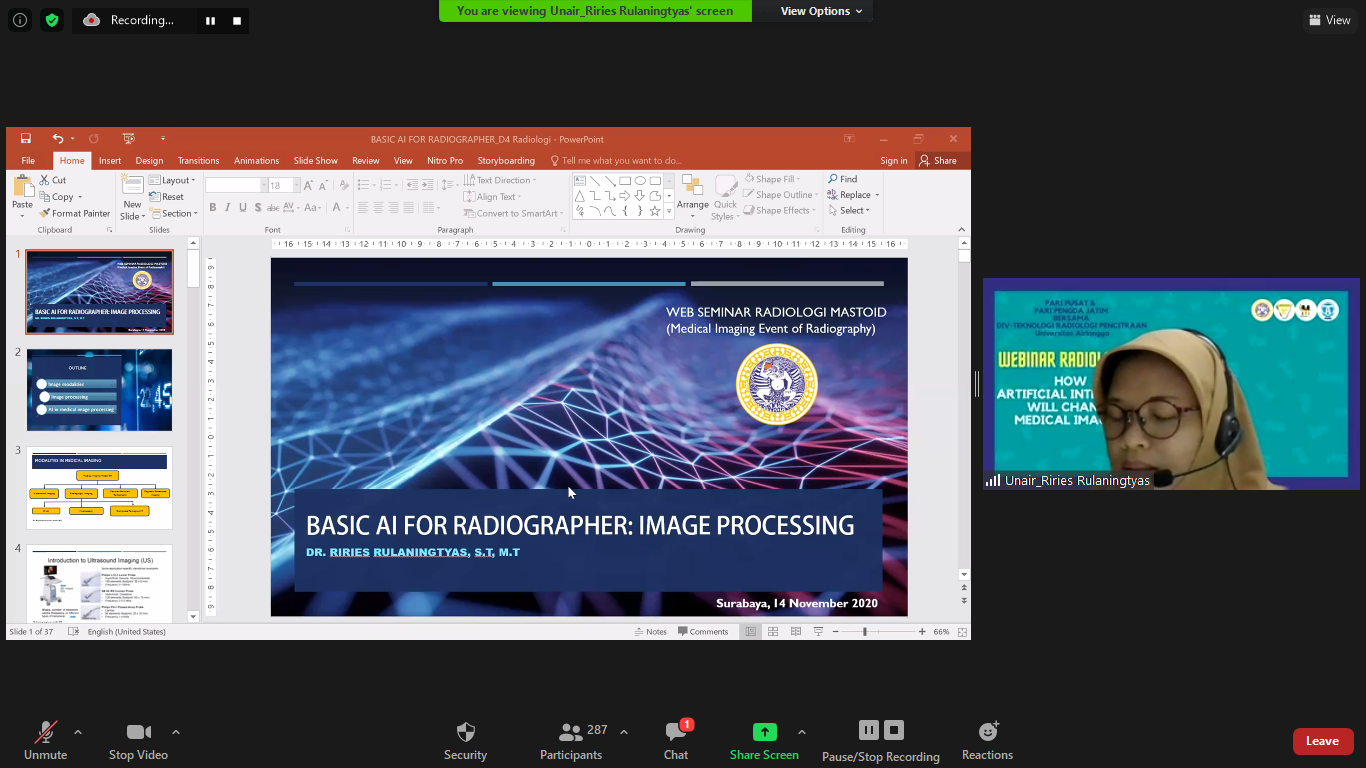UNAIR NEWS – In line with the need for accurate and quality examination results in the field of radiology, Artificial Intelligence (AI) is starting to play a role. AI helps doctors to improve the quality of image interpretation. Then, will Artificial Intelligence (AI) replace the radiographer profession?
The topic was discussed in a national webinar entitled “How Artificial Intelligent Will Change Medical Imaging”. Paulus Rahardjo, dr. Sp. Rad (K), a senior radiology consultant, emphasized that AI is a weapon. AI will not replace the radiographer profession.
On the contrary, without AI, the radiographer profession will be threatened. “It depends on who holds the weapon. If it is held by industry or large capital owners, the radiology profession might be threatened, “Paulus explained in the webinar on Saturday, November 14, 2020.
The lecturer of Faculty of Medicine (FK) Universitas Airlangga revealed that AI can develop doctors’ expertise in interpreting medical images because, in a short time, AI can access large amounts of information. So it can predict the patient’s condition.
“AI can see hundreds of thousands of cases in a matter of seconds. It has the intelligence to predict better the patient’s condition, “he said.
AI is often considered only to interpret an image. He continued, the work that AI could do was extensive.
In the field of radiology, there are at least six things that AI can do. First, it determines the best inspection protocol automatically. For example, whether the patient needs a CT scan or an MRI.
He continued, AI can even determine a patient’s radiation dose in one year. “He can analyze whether there is a need to increase or decrease the examination protocol. This is very helpful, “he explained.
Furthermore, AI can also play a role in managing schedules. For example, when there is an emergency patient, AI can prioritize the patient’s order for immediate examination.
Third, image acquisition and reconstruction. Paulus said that AI could determine the examination protocol, position, and lowest radiation dose that should be used to examine patients.
Fourth, AI can display examination results according to the habits of doctors. Also, AI can diagnose fractures, osteoarthritis, bone age, and bone strength.
“To compare the lung tumor from 1.5 cm to 1.3 cm, it will be difficult for our eyes to radiology. But with AI it is easier to do because the level of accuracy is far above ours, “explained Paulus.
Finally, quantitative analysis. AI can display the severity or lightness of a patient’s disease.
“Embrace and use AI. There is no need to worry because the way we handle patients, our attention, and our care can never be replaced by AI, “he said.
As additional information, the webinar organized by the D4 Student Association of Imaging Radiology Technology, Faculty of Vocational Studies (FV) Universitas Airlangga was attended by around 300 radiology students, radiographers and radiologists throughout Indonesia.
Apart from Paulus, there were two other speakers, lecturers of Image Processing and Big Data, Faculty of Science and Technology, Universitas Airlangga, Dr. Riries Rulaningtyas, S.T, M.T and Application Specialist of Philips Arif Rohman Saleh, Amd.Rad. (*)
Author: Erika Eight Novanty
Editor : Binti Q. Masruroh





